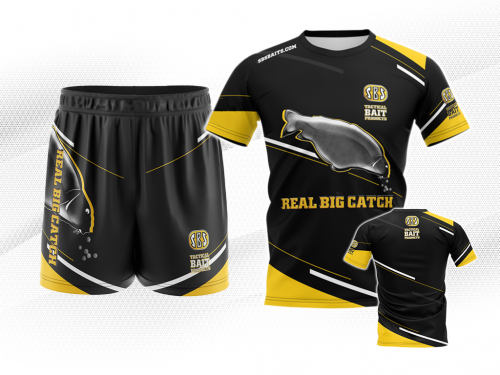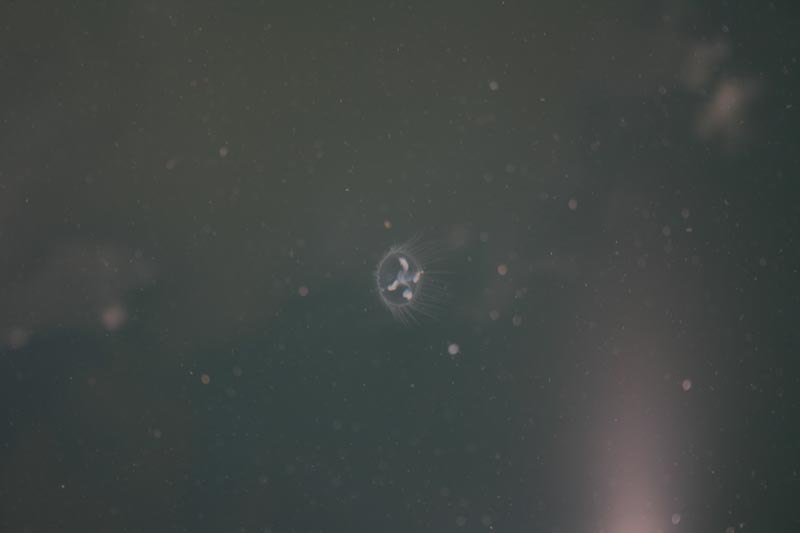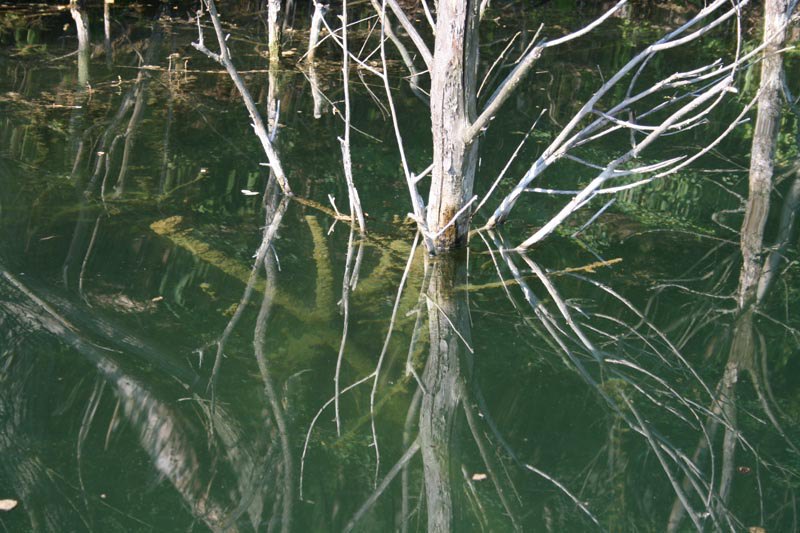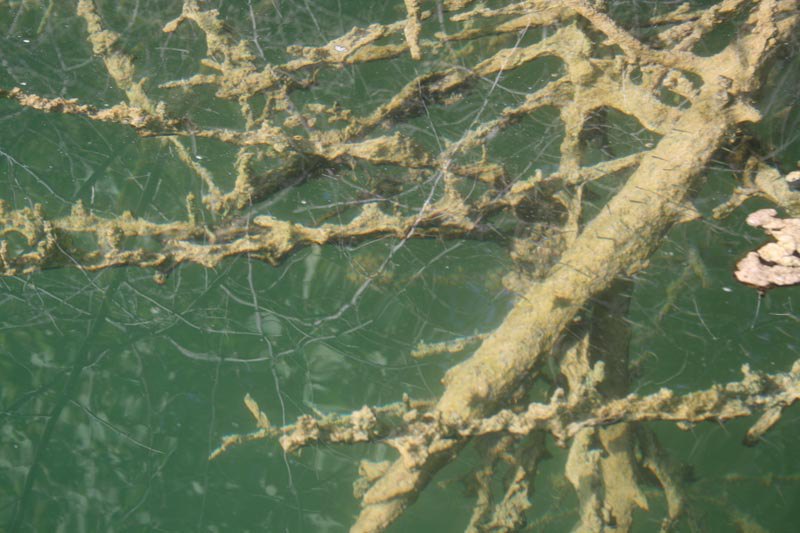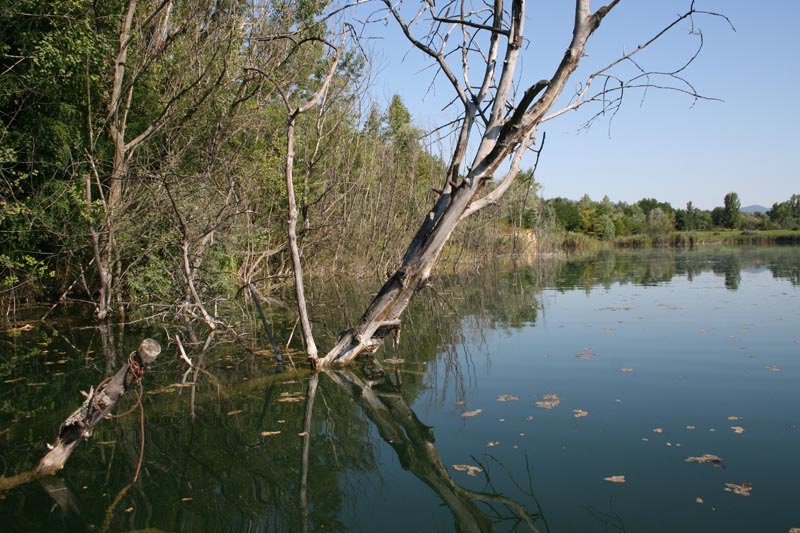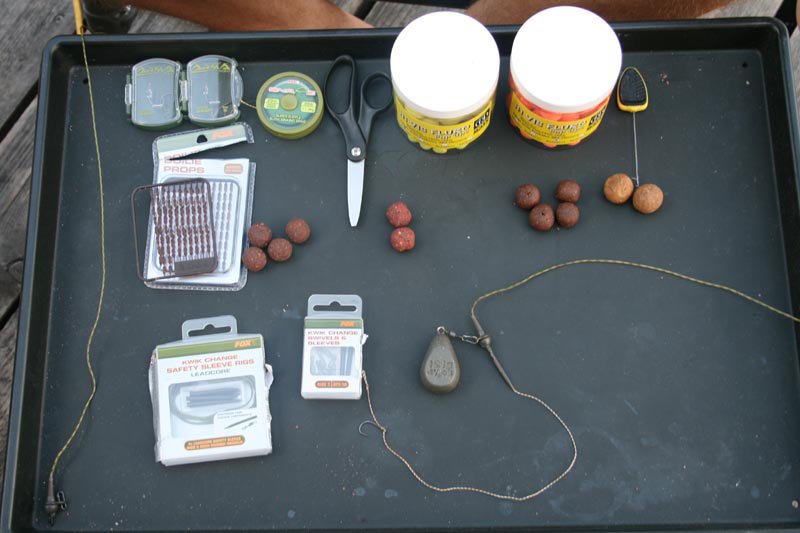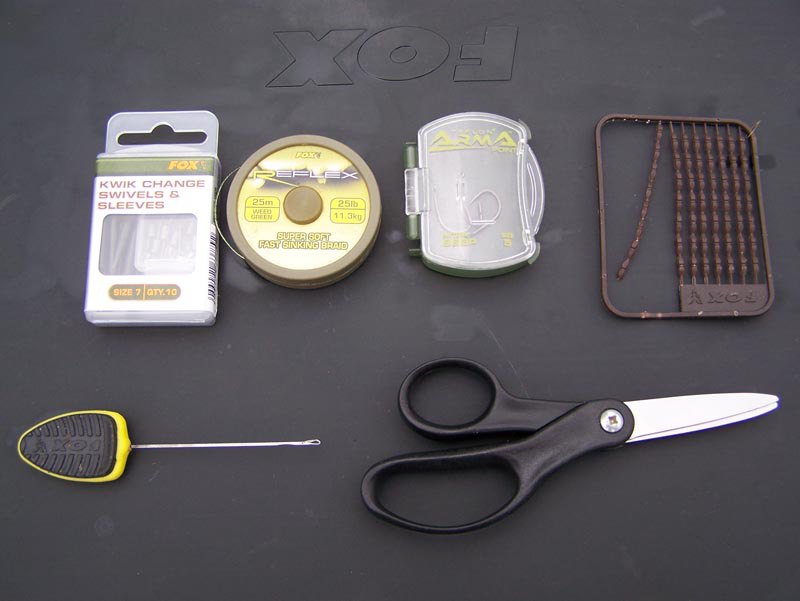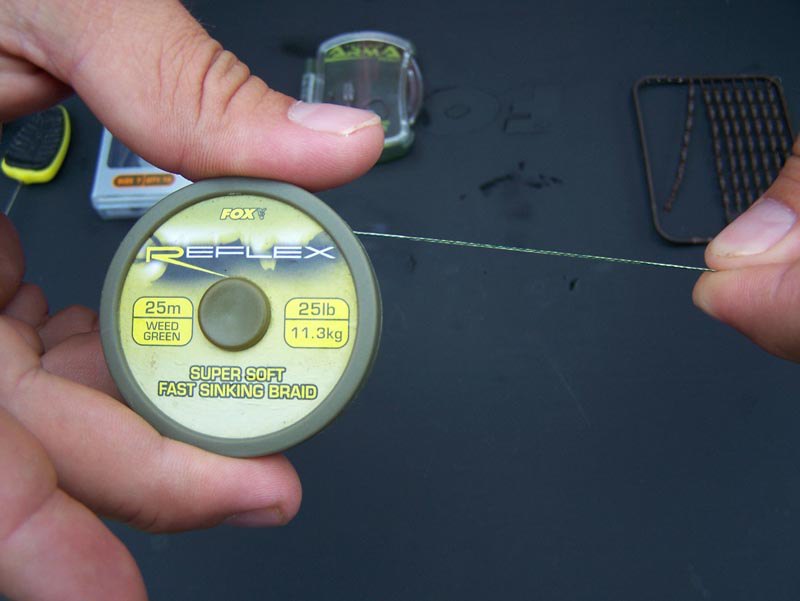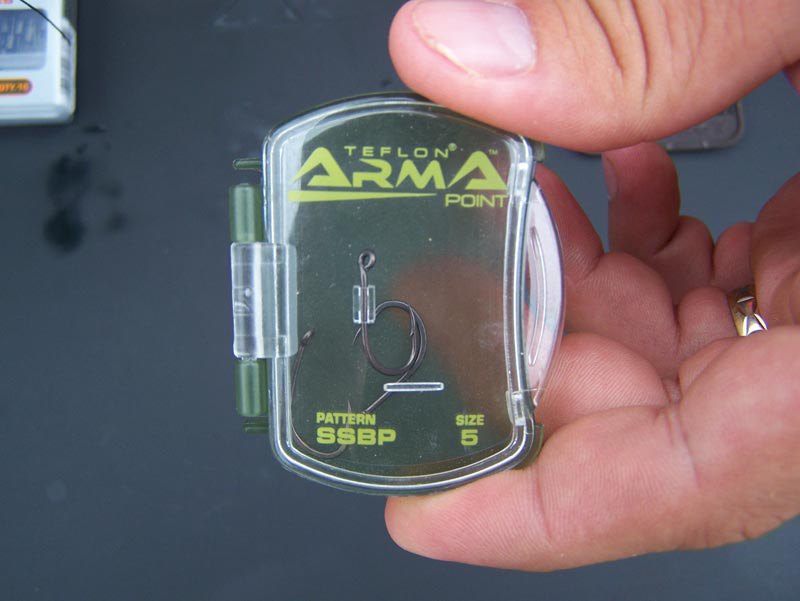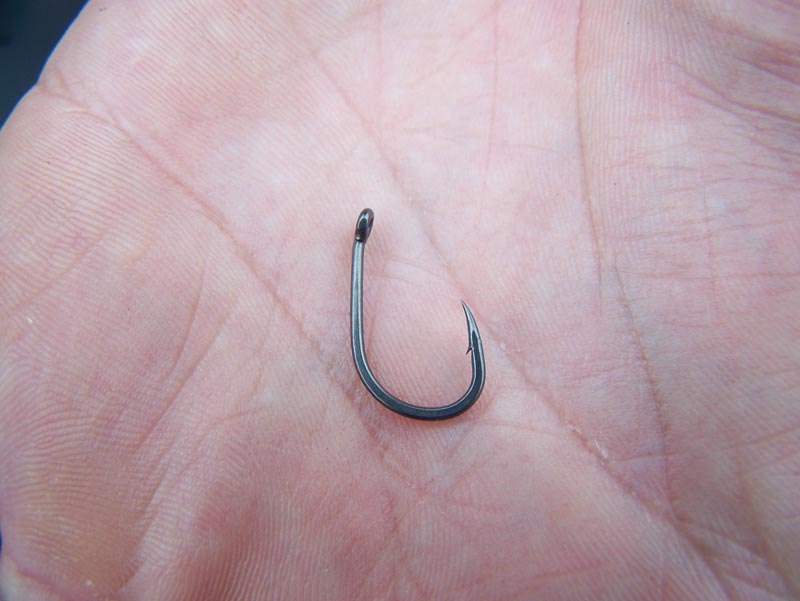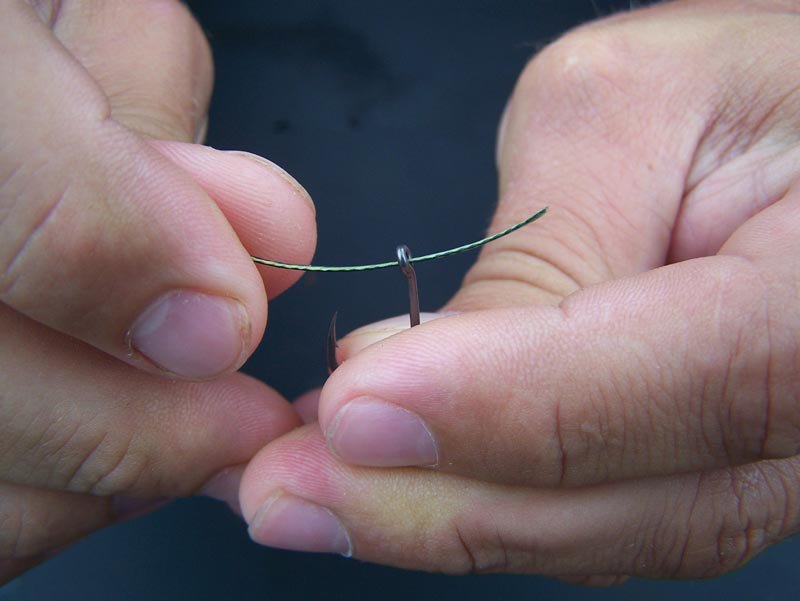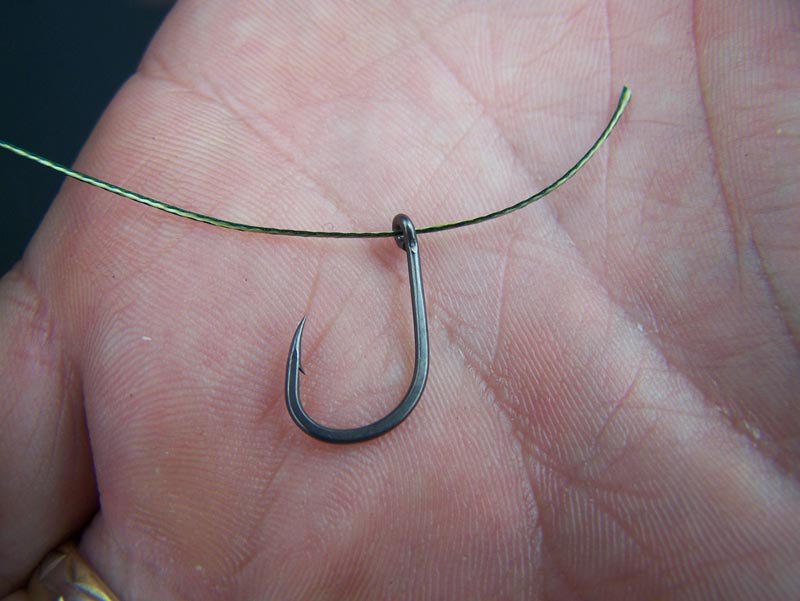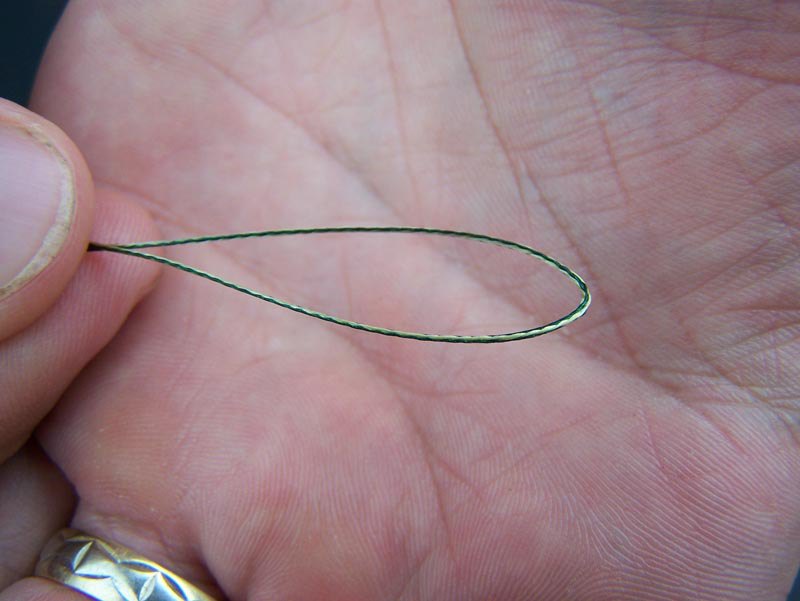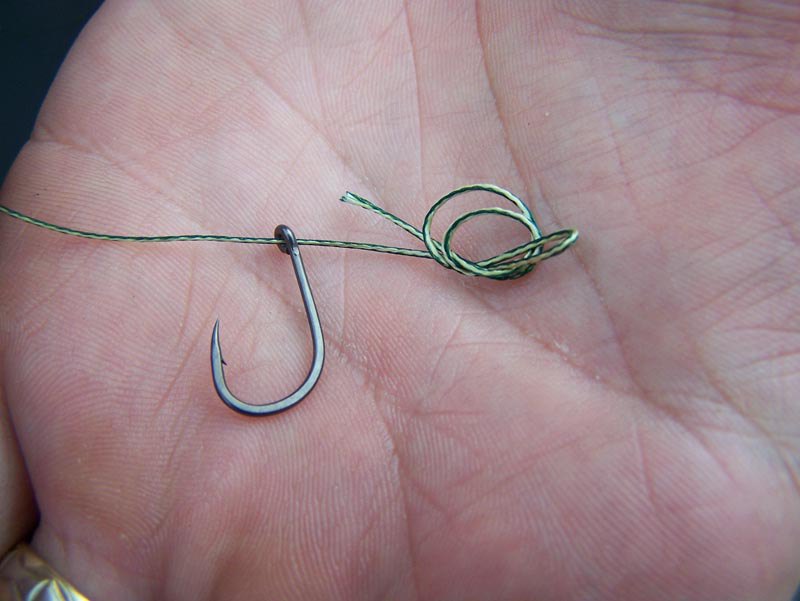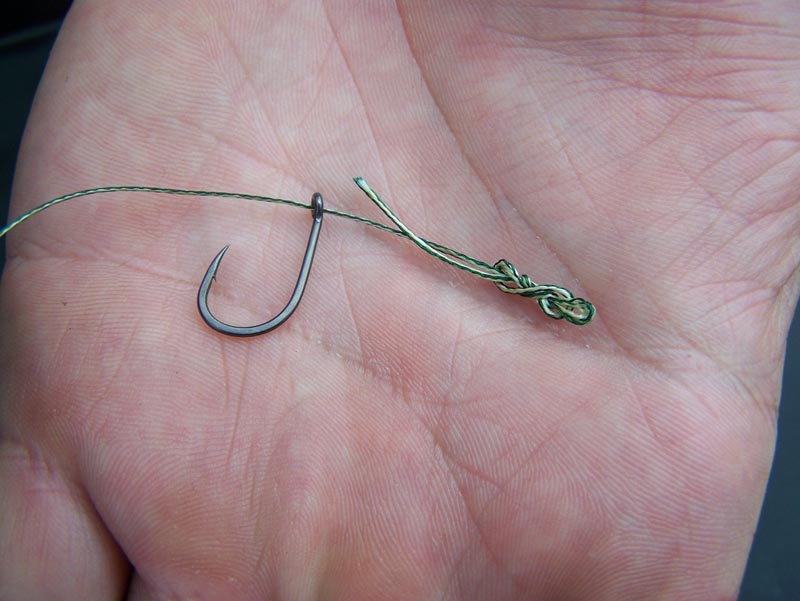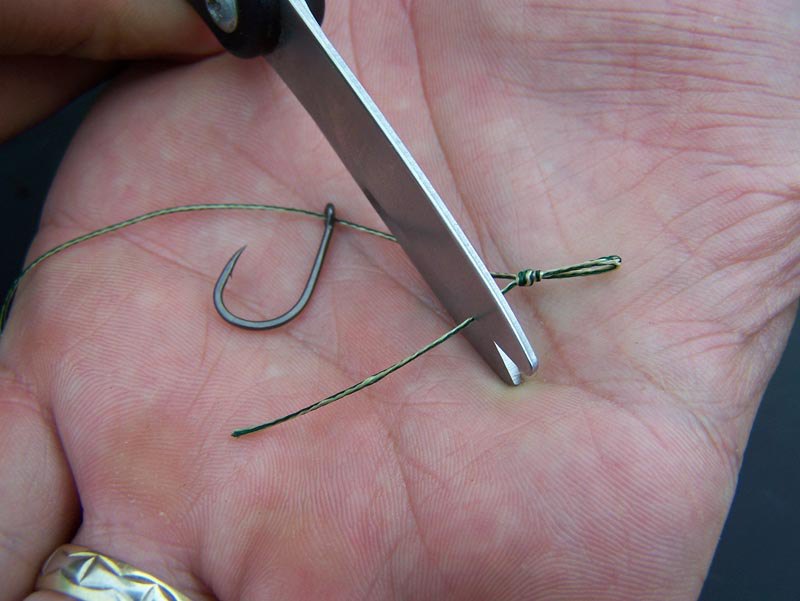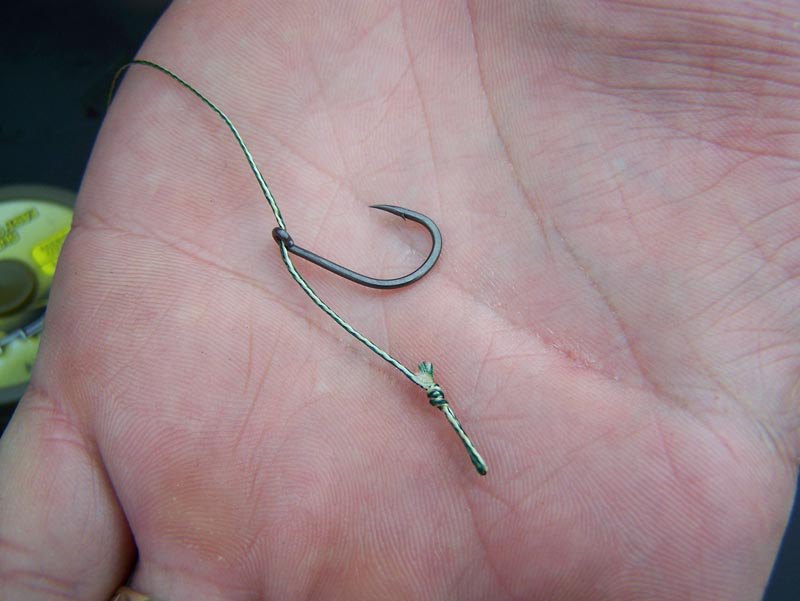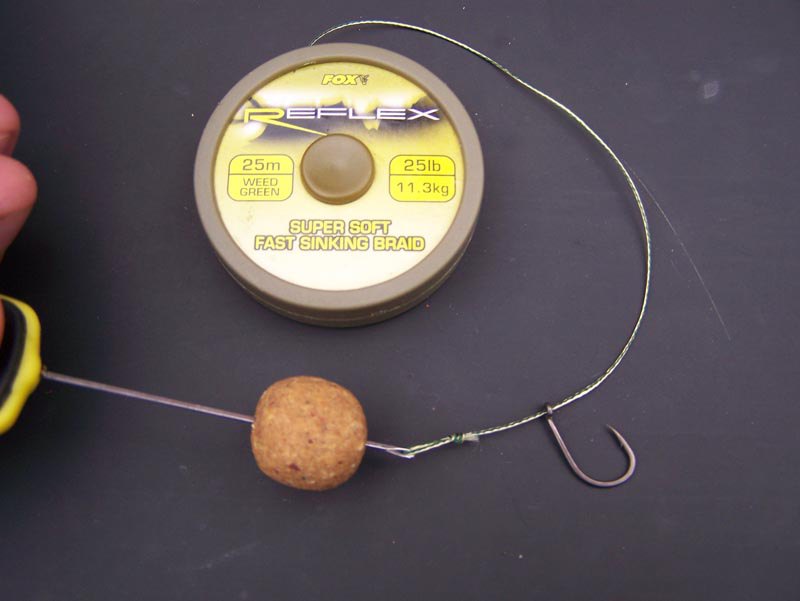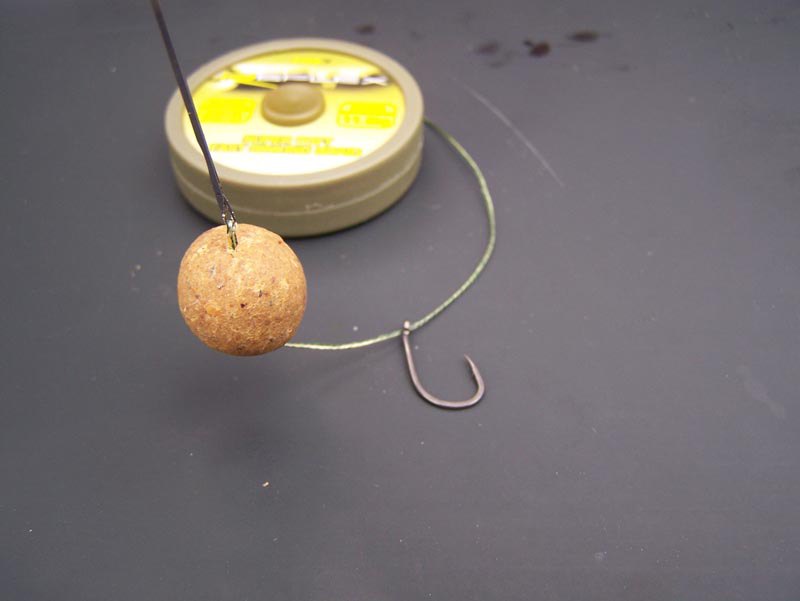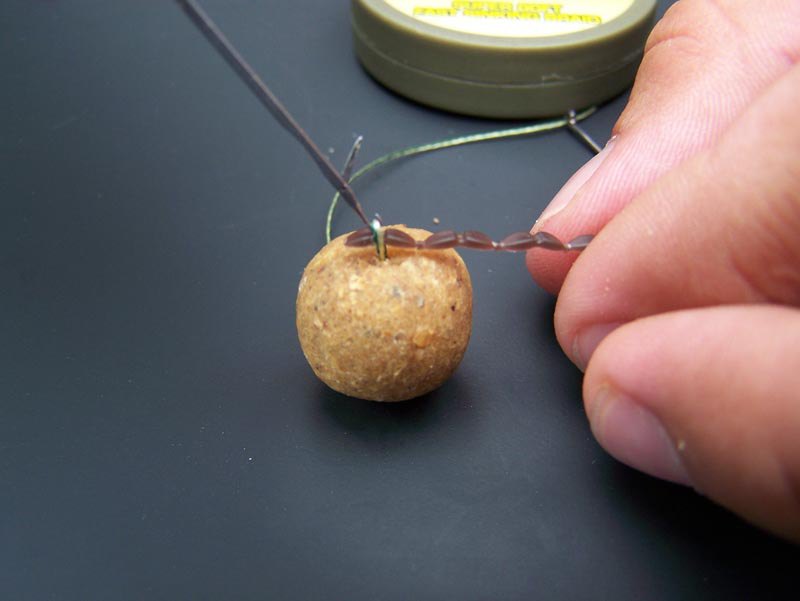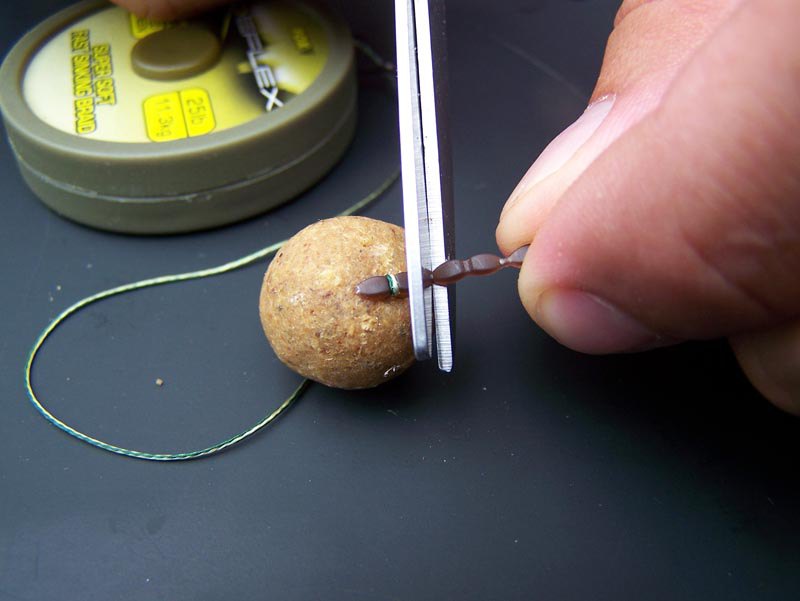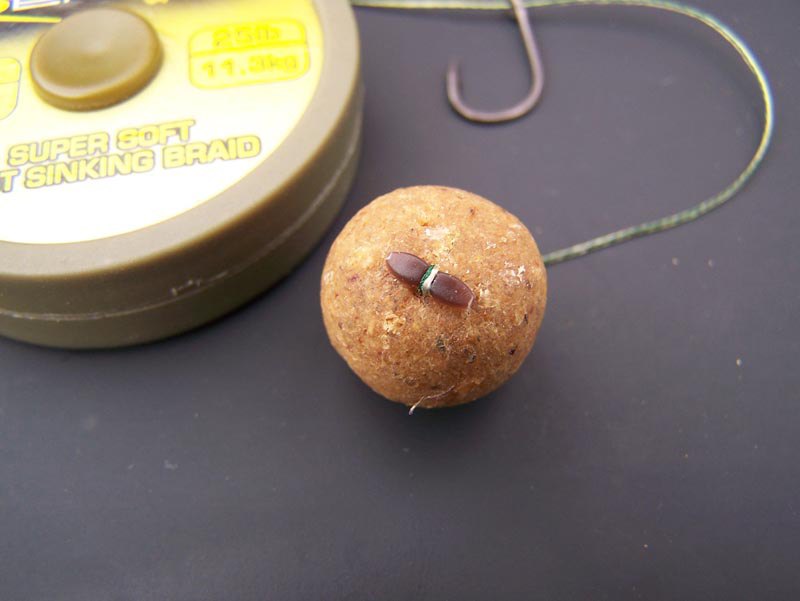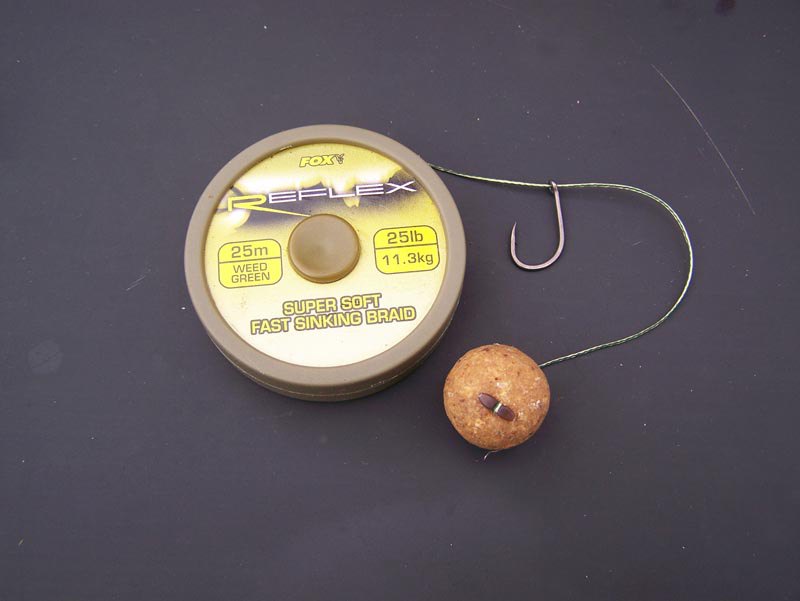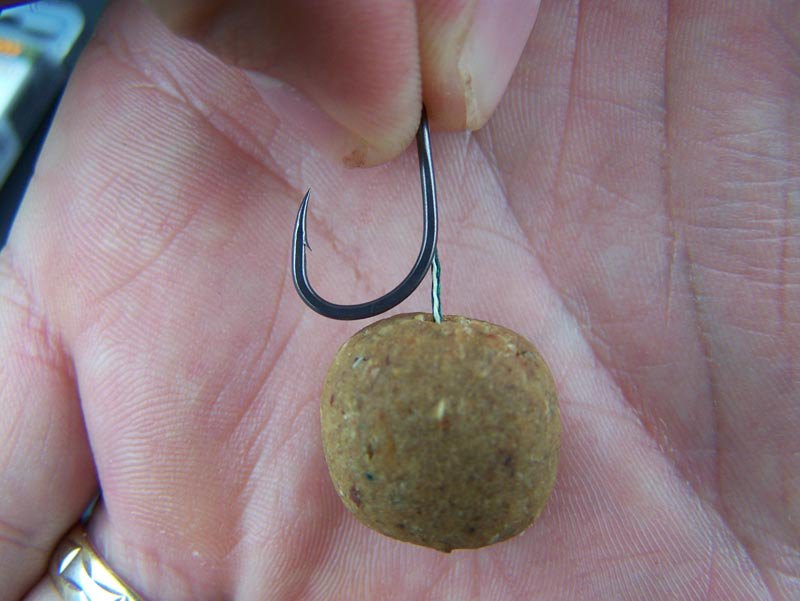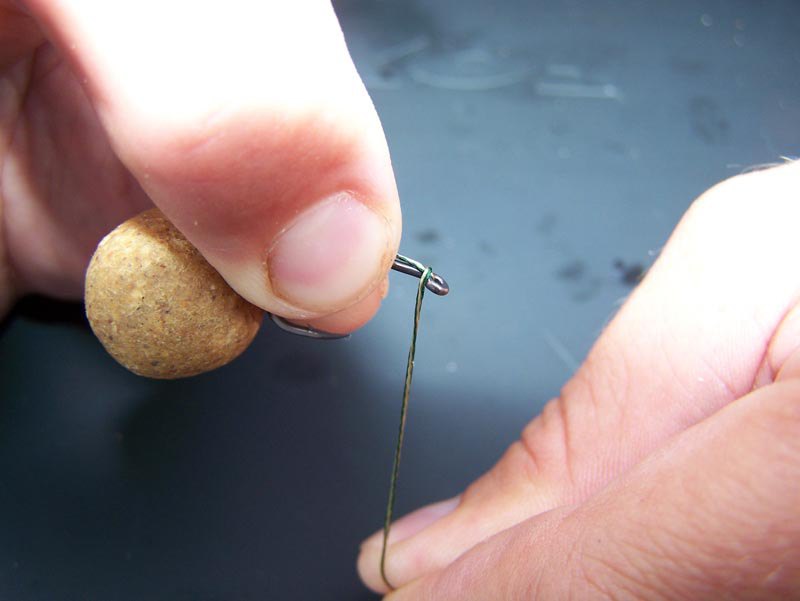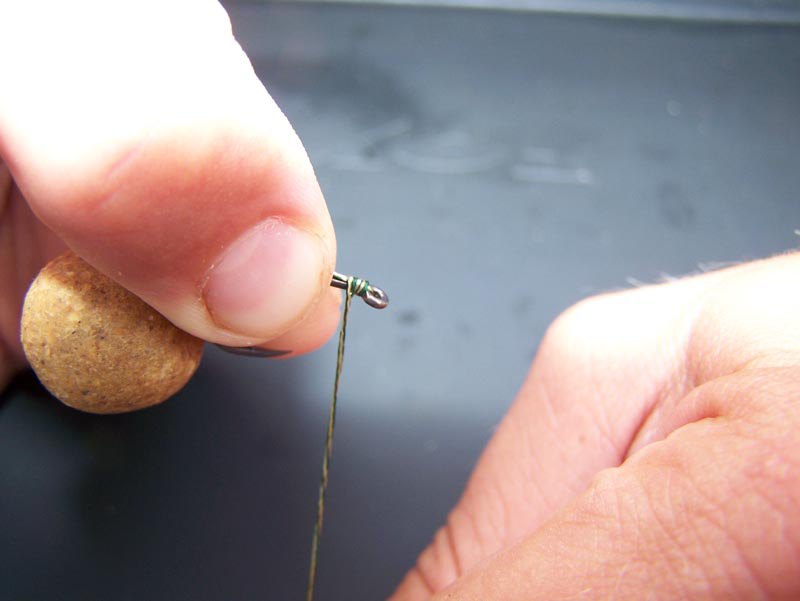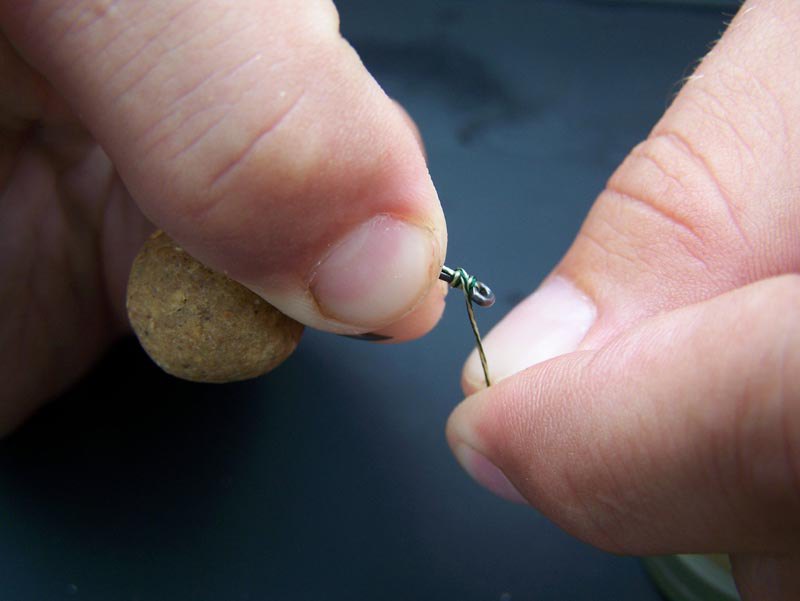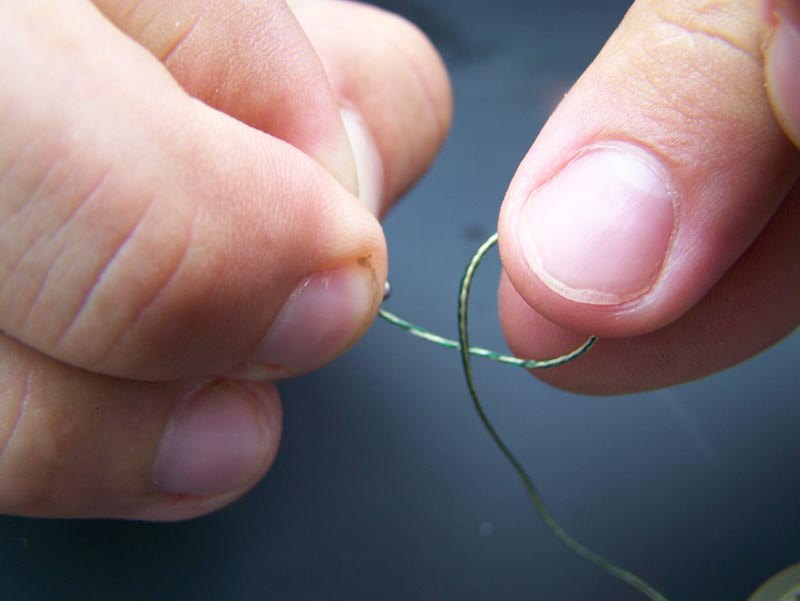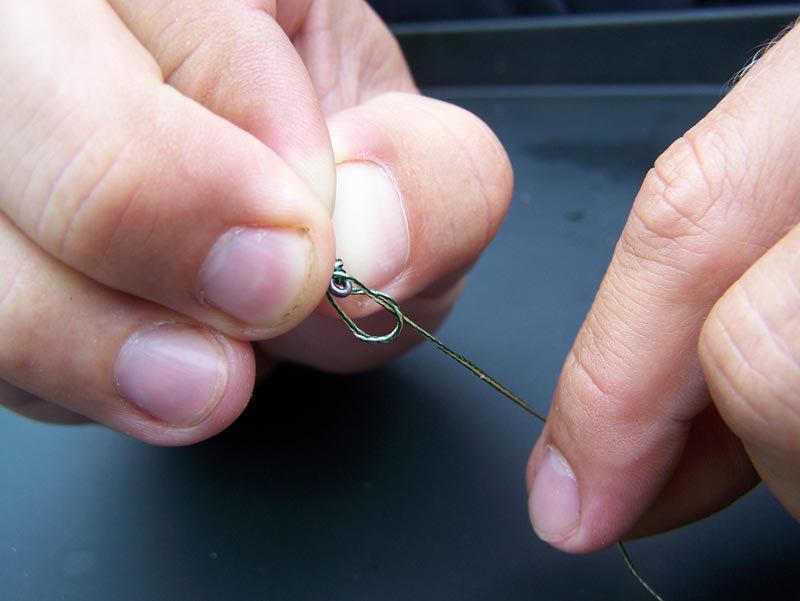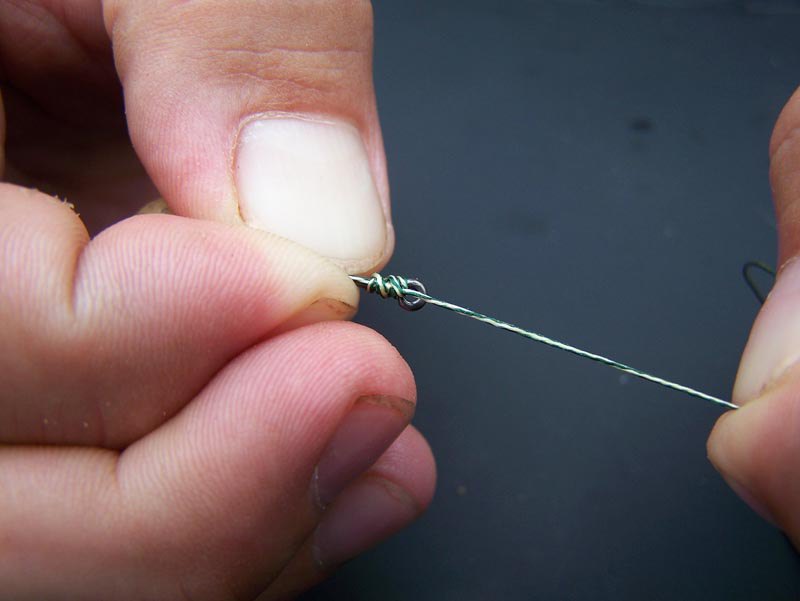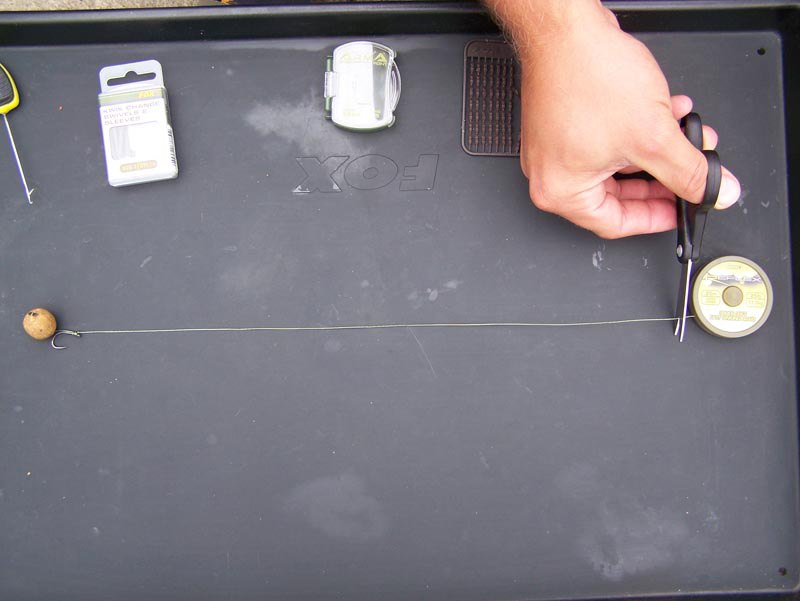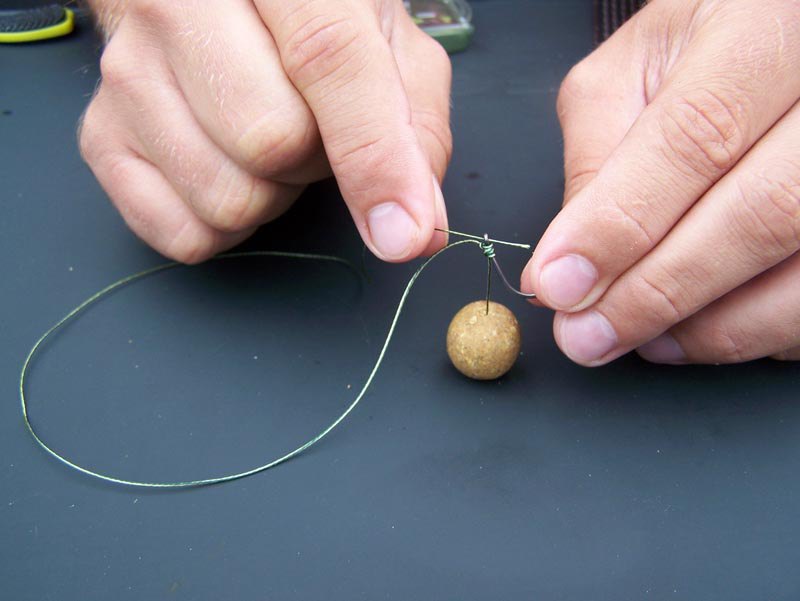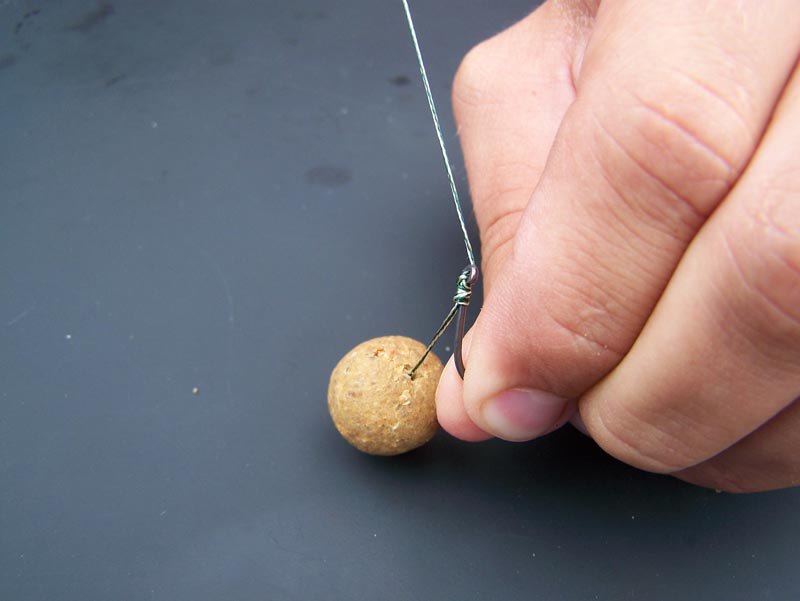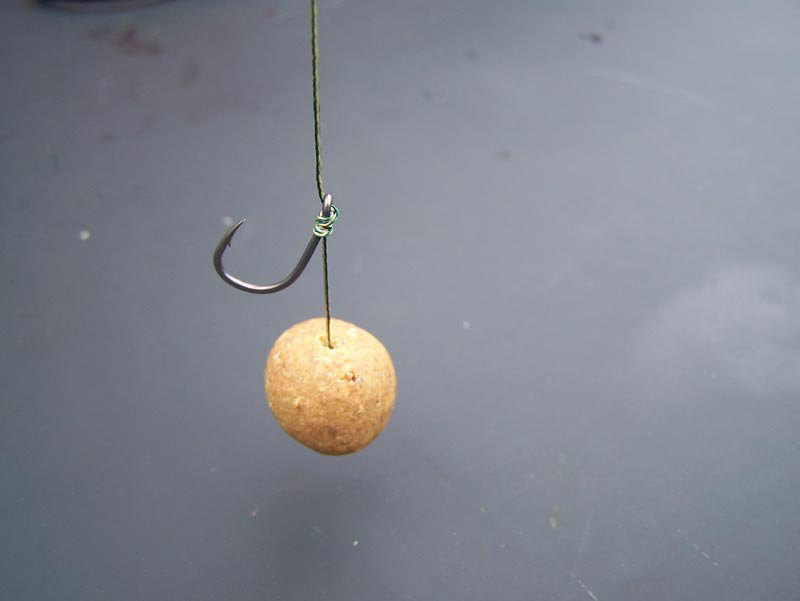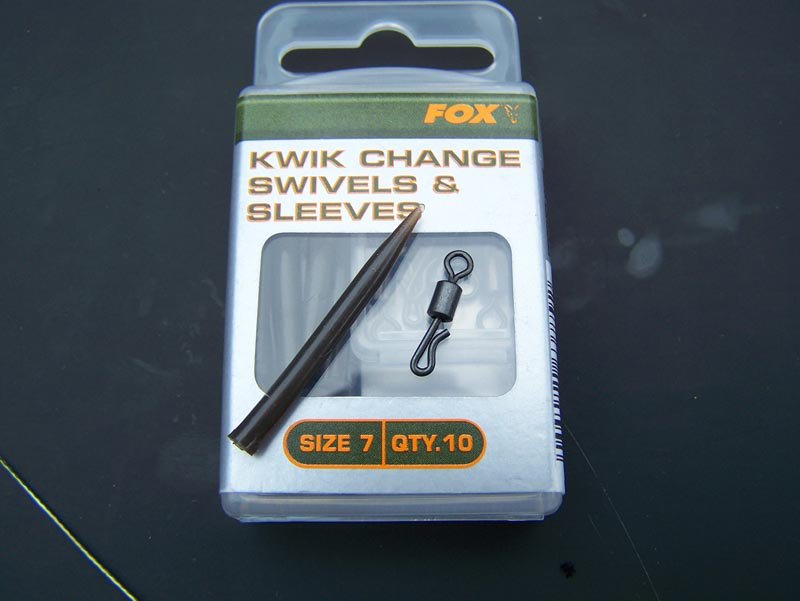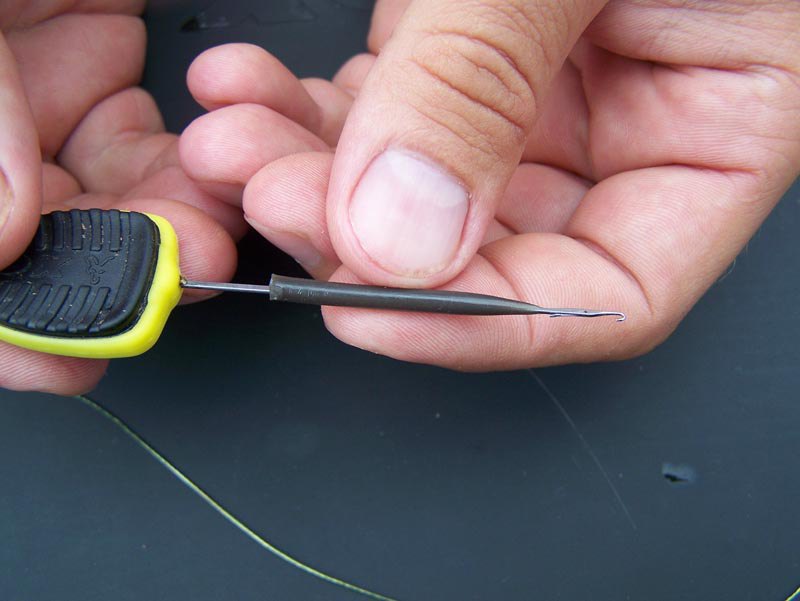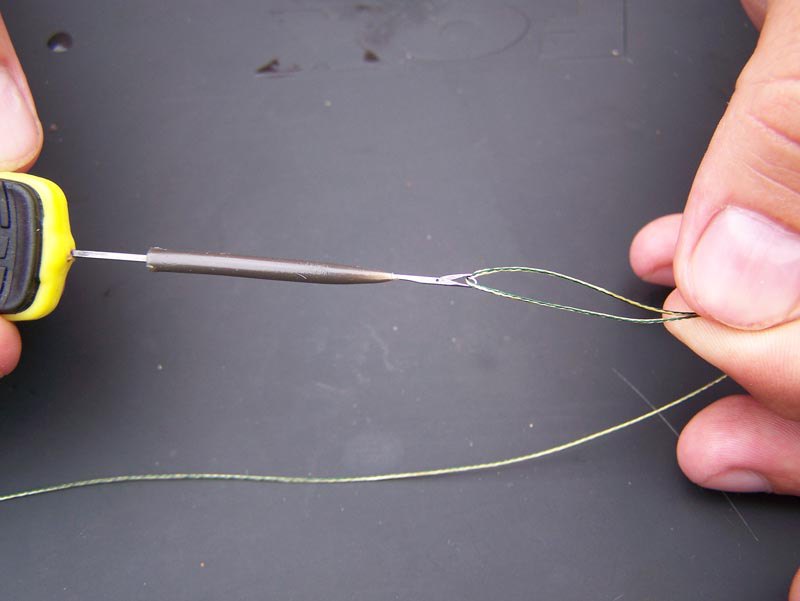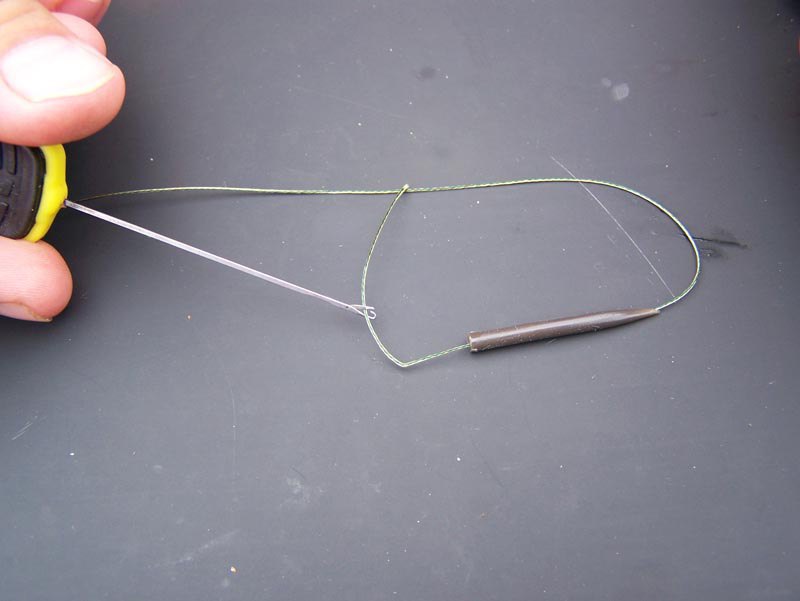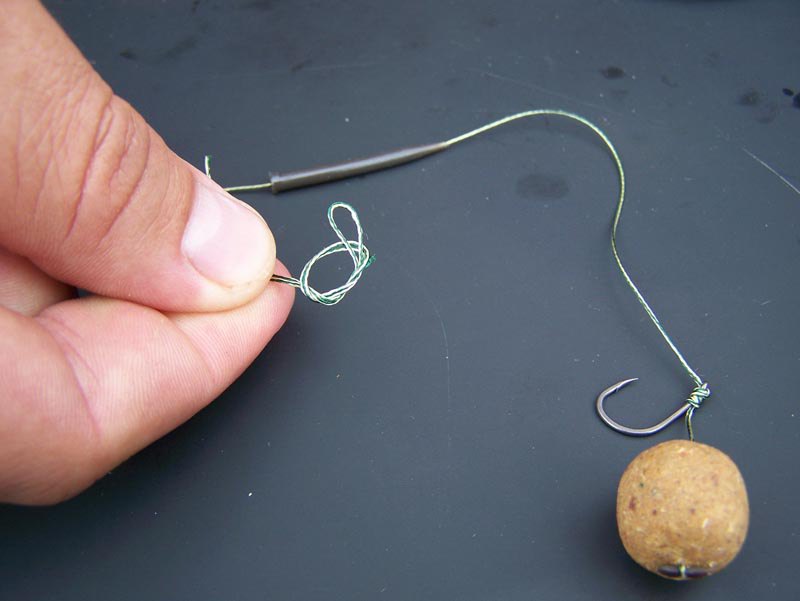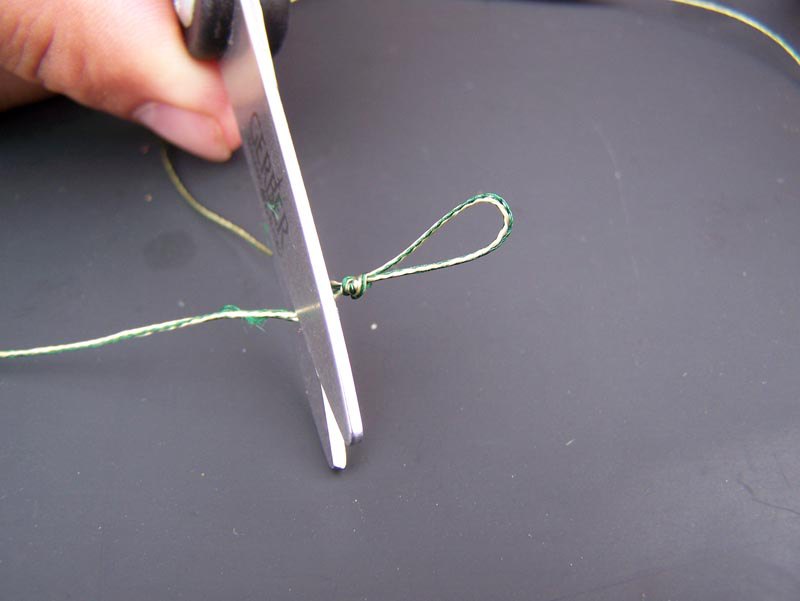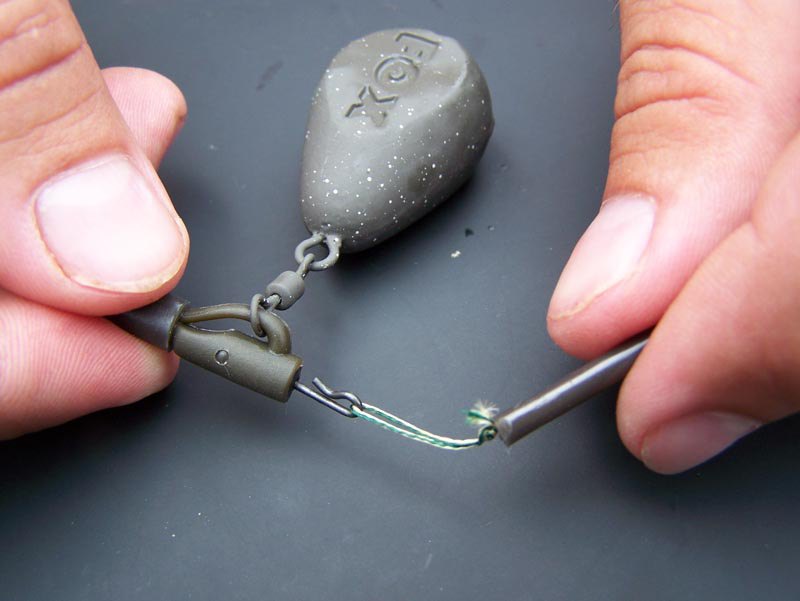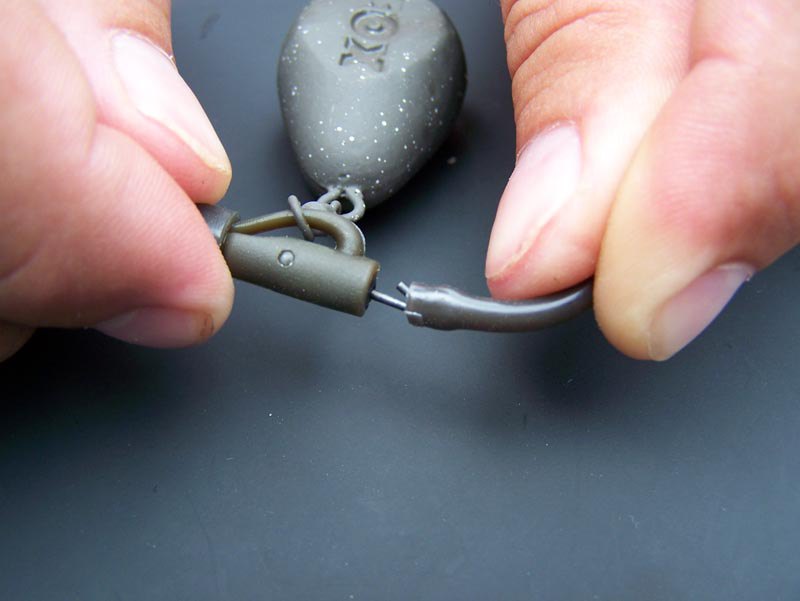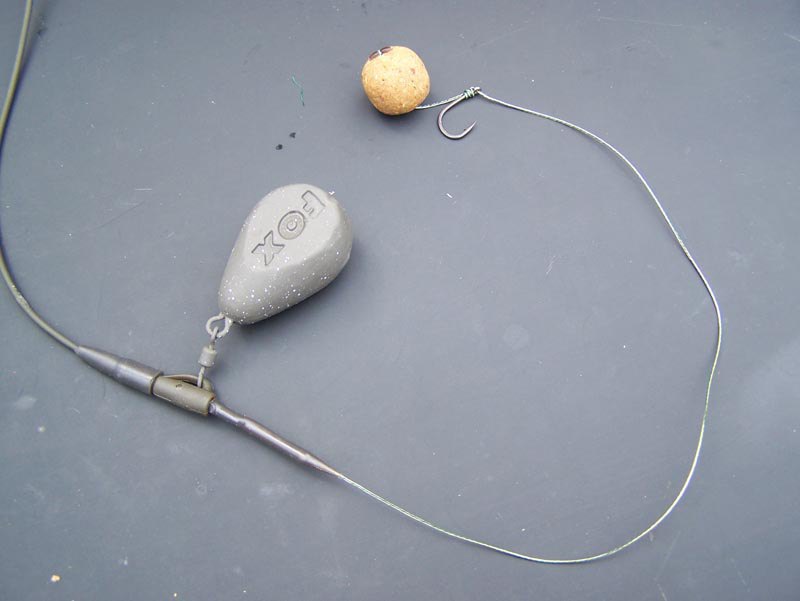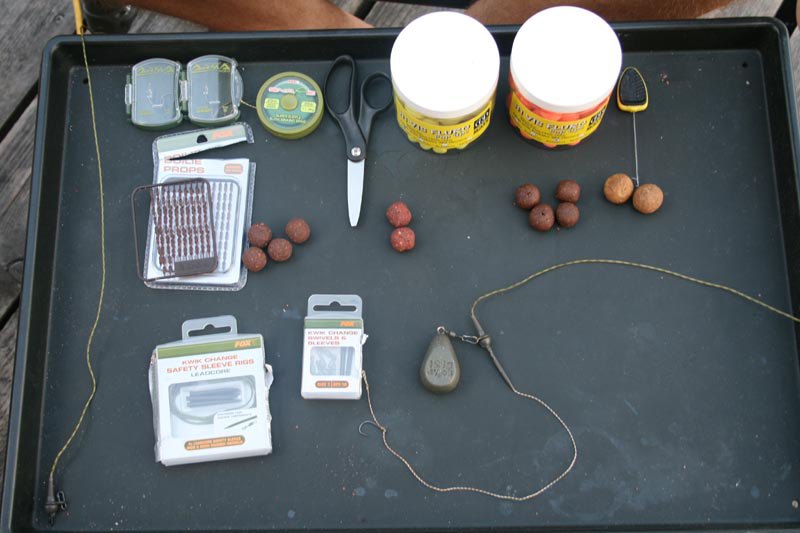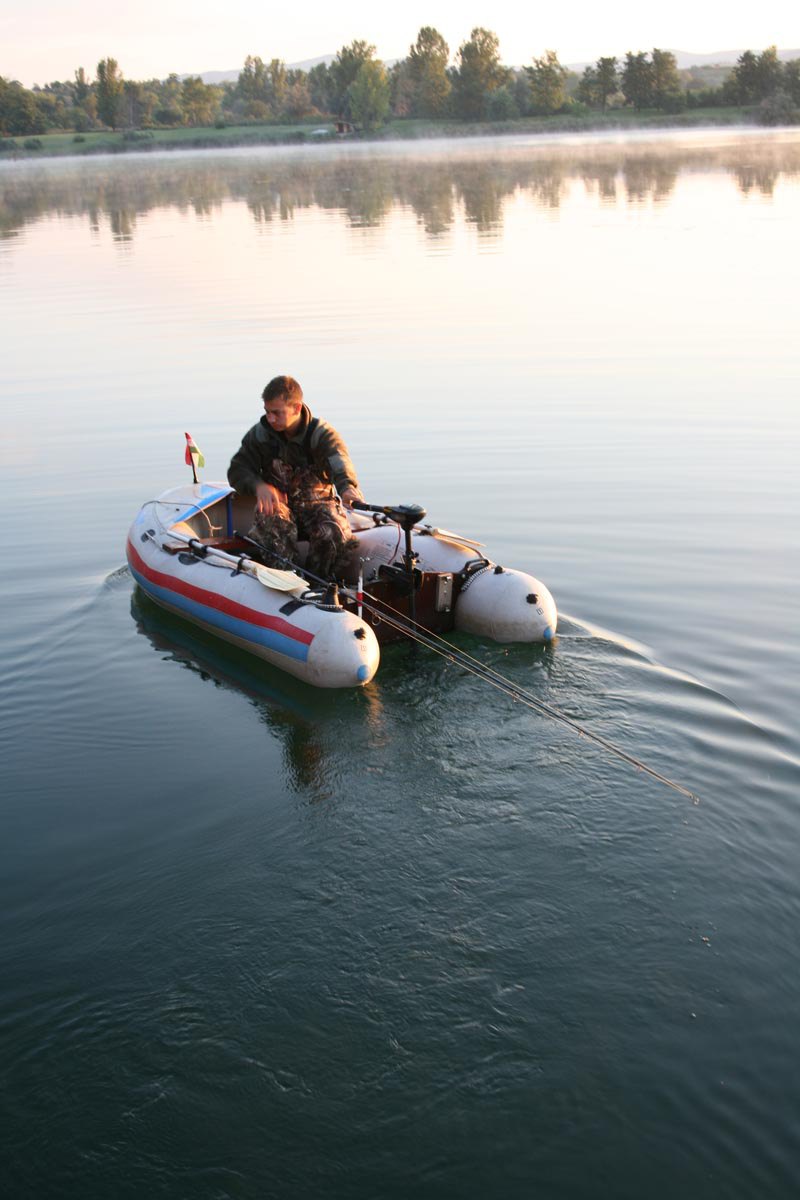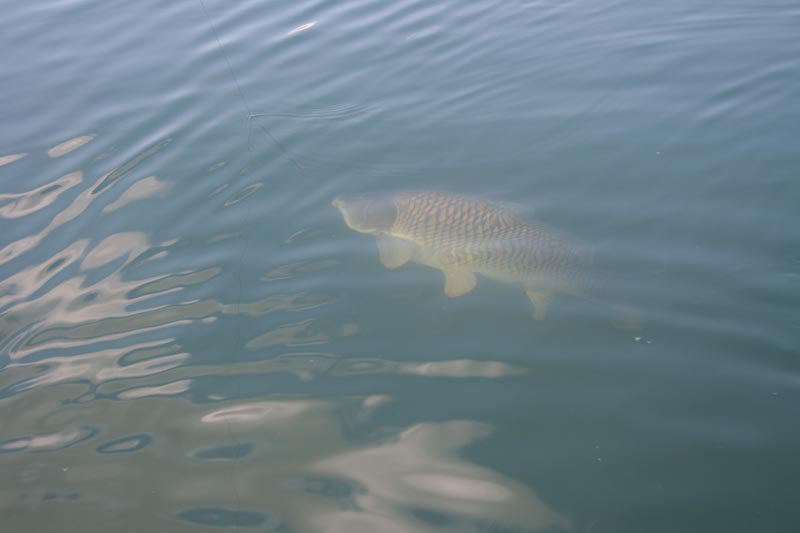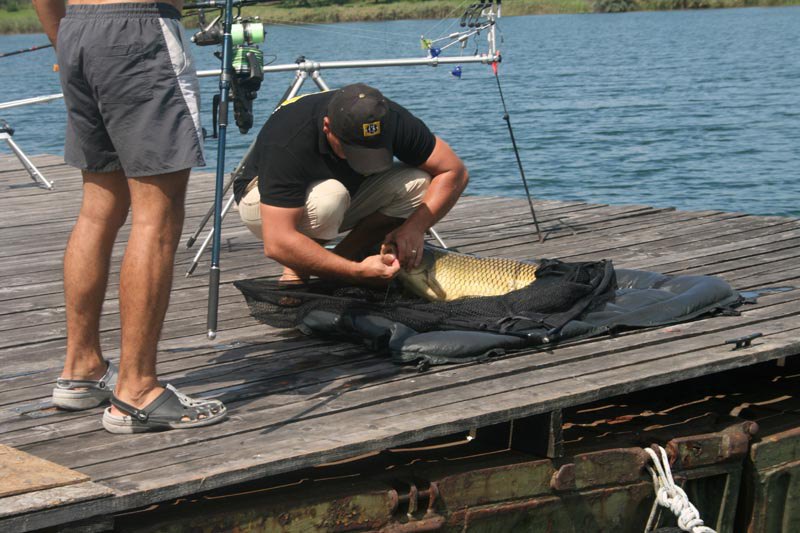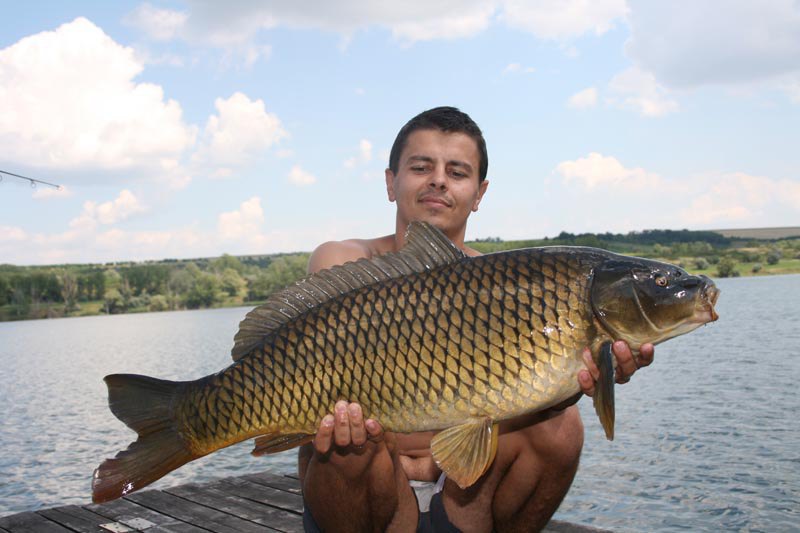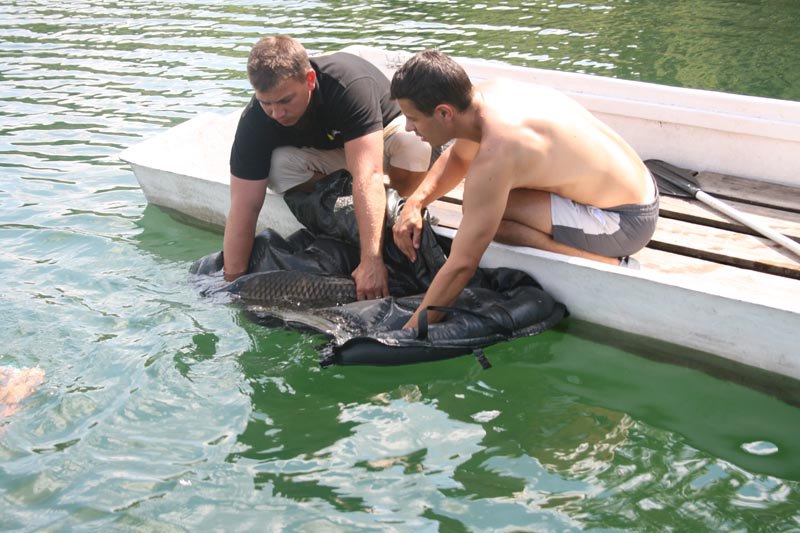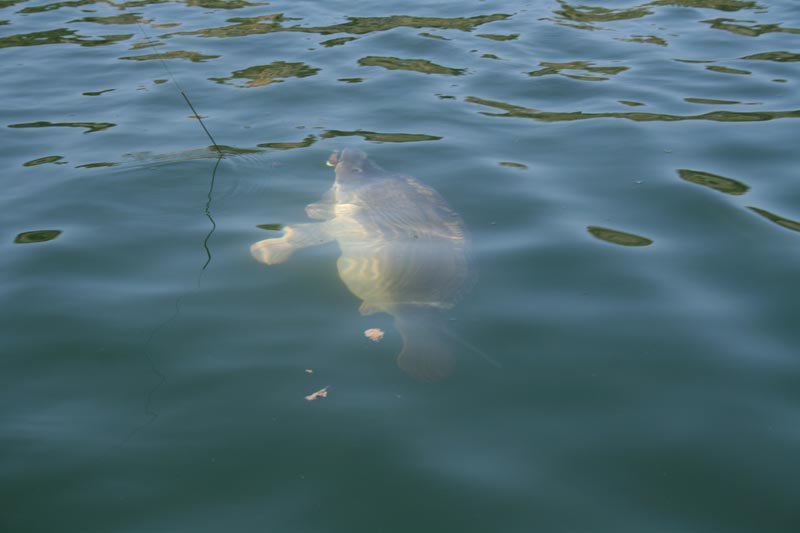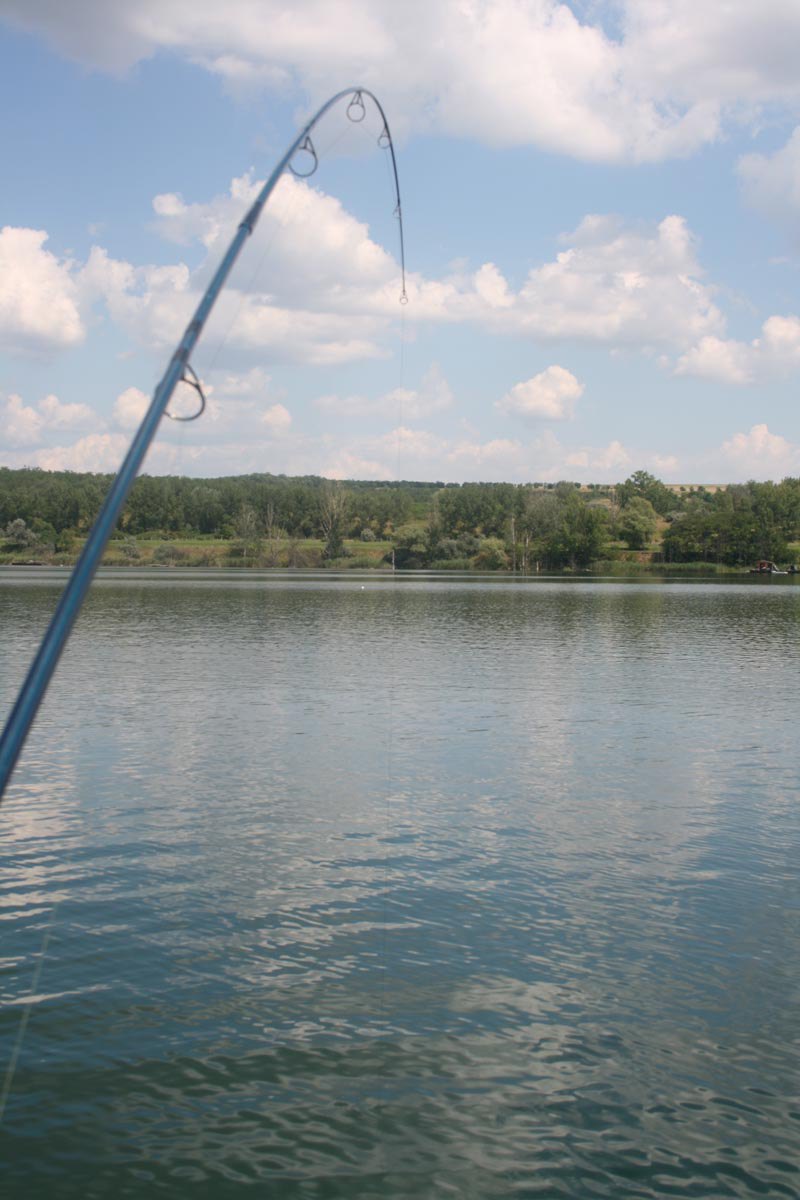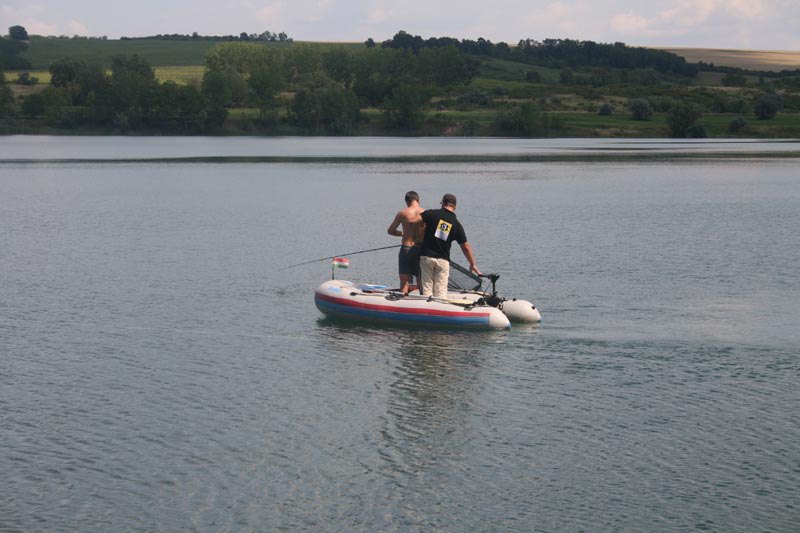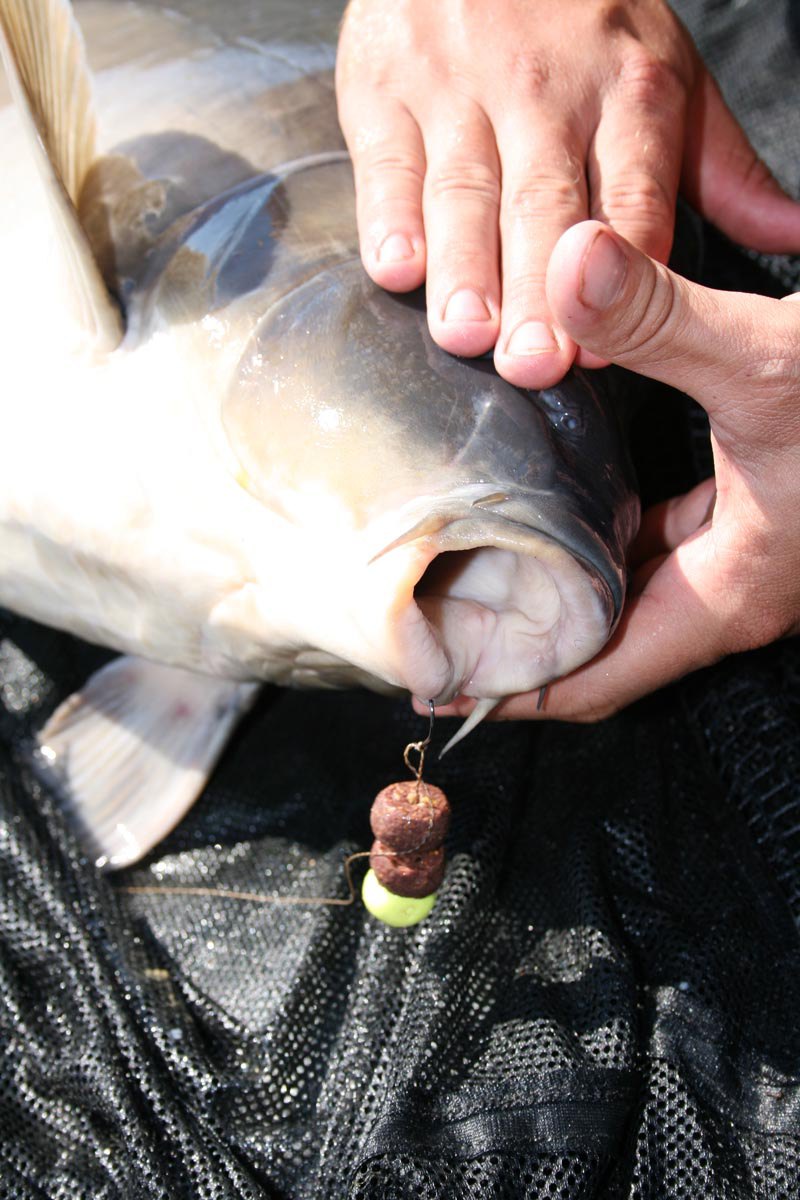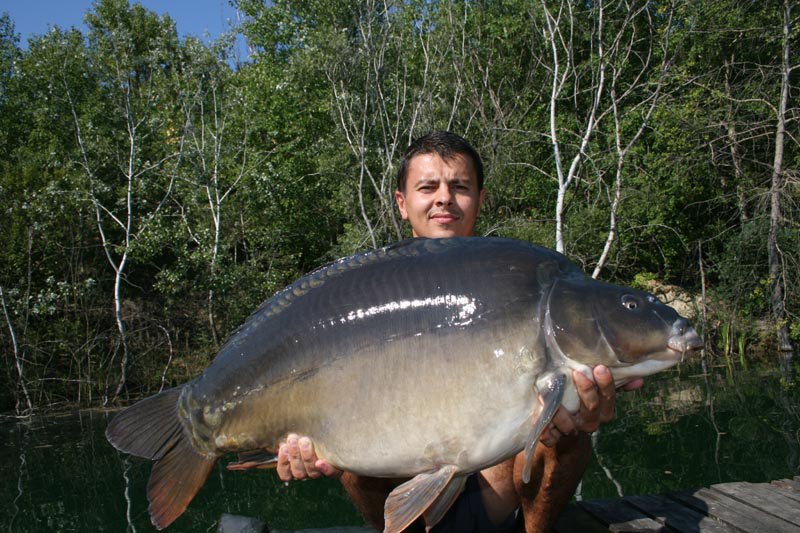SBS big fish tactics - Part 2 - Boilie fishing in extreme conditions
The “Big fish tactics” series continues and I will guide you through extremely difficult fishing on a mine lake. My friend Andris and I are testing our skills on a lake where even the locals, who have spent the majority of their lives on this lake, often give up. Moreover, this is the very first time we have fished on this lake, so we had a hard time. So join me again and, as usual, I promise you will not be disappointed…
At the pond owner’s request I will not mention the pond’s name. The reason is that there are special angling rules on this private lake the primary aim of which is to protect the fish. Therefore an angler can only enter the pond’s area with a letter of recommendation or through a personal acquaintance. This way the owner is able to exclude the anglers who pay no attention to the rules and care not for this special stock of fish. It is very special indeed, the average fish is 10 to 14 kg and many Carp over 20 kg are available. This pond boasts extraordinary water quality which is proven by the freshwater jelly-fish.
There are not many lakes in Hungary where you can see freshwater jelly-fish.
Even the pond’s depth is extraordinary. At its deepest point it is 30 m and the average depth is 14 m. As there is a 25 m depth directly at the spot no. 5 where we fished (a stage a few metres away from the bank), we chose the only possibility, the method of bringing in. We prepared our end rig for this method and, while preparing it, we had to take into consideration the special rule which states that braided line must not be used, despite the many obstructions.
Just an example of the obstructions. The pictures show clearly that it will not be easy fishing.
Take fish from here?!
The mine lake and its environment are wonderful!
The only permitted rig was the shorter than 50 cm leadcore, but it may only be used if the lead is fixed on the rig so that it can slip down if it breaks. Andris, being lazy, used the end rig used earlier for throwing on two fishing rods, i.e. end rigs with simple FOX Horizon in-line 92 gram leads.
This end rig was not developed for the bringing-in method, however, it proved to be effective.
For his third rod and for my rods, after we had thought the above facts over, we chose two different end rigs. The first end rig, the FOX Leadcore Safety Sleeve Rigs & Kwik Change Swivels, is a prepared end rig with safety lead fixing, lead rig and quick change clip. I have already presented this in some of my short movies, please download to see, step by step, how to make this rig and how to bait it up with the mixture of Squid & Octopus boilie and Fluro pop up boilie. The other end rig, the FOX Safety Sleeve Rigs & Kwik Change Swivels, is an anti-tangle end rig with safety lead fixing and quick change clip. I fixed it to the 0.285 mm diameter Carp Spirit monofilament main line, and then placed a 132 g lead on it with a metal clip. I would like to show you a new, special and extremely simple hook link. It is the most suitable rig to catch big fish, but it can be used to catch smaller fish, as well.
How to make the hook rig, step by step:
Accessories necessary for work: scissors, boilie needle, boilie stopper, hook rig, hook and the quick change swivels for fixing.
I will start the presentation with my favourite hook rig (braid) in this case (FOX Reflex 25 lb shellfish-proof hook rig)
My favourite hook is the FOX SSBP hook, and I have chosen the very small size 5 due to the cautious large Carp.
An extremely important fact is that this hook link can only be made effectively with a hook whose eye bends towards the point.
The first step is to lead the braid through the eye from the direction of the point.
It is very important to always thread the braid through the eye from this direction.
Bend the threaded braid backwards…
… and make a loop you see in the picture by wrapping it again …
… then again! It is very important to prevent the loop from loosening later, it is a nuisance if it loosens during use. Do not worry if you feel the knot is too large. It has an importance I will explain to you soon.
Cut off the excess braid.
If you have worked well you are at this stage now.
Now thread the chosen bait or baits with the help of the baiting needle. I have chosen the SBS Fruit&Nut (tigernut-based and pineapple-flavoured) boilie in 18 mm diameter.
Now you see the role of the knot. The boilie gets stuck on it and it will not slip up and down on the hair rig. If you have the problem that the boilie cracks when it gets to the knot, because it is too hard, make a hole in the boilie first and then pull it on the hair rig. This problem can be solved so simply.
The next step is to place the stopper….
… and then cut off the excess!
After you have removed the excess stopper pull it to the boilie’s base with the help of the hair rig until it bumps against it.
If you have followed the steps properly you are at this stage now.
Now set the optimum distance between the bait and the hook’s “bay”. You see it in the picture.
After you have found the optimum distance start winding the braid around the hook’s shaft. Once…
… twice and three times. And that’s enough.
Then during one winding lead the braid back to the eye and press it to the shaft with your finger.
Then make a loop with your other hand in the method you see in the picture.
Place it directly under the eye on the shaft…
… and pull it tight. This is a safety step so that the knot will not loosen by accident. The braid should always be at the rear of the eye, if possible. “On the side that is opposite the point”.
Then cut the hook rig braid so that it will be a bit longer than the length of the hook rig you want to make.
Then lead the free end of the braid through the eye just as you see it in the picture…
… and stretch it. That’s why it is so important that the looped braid is at the rear of the eye.
Voila! The result of our joint work. Now you see why it is so important that the eye bends towards the point: to hang like to one in the picture. You can only achieve this result with such a hook.
But we are not ready yet. We still have some work with the FOX Kwik Change Swivels & Sleeves! It is a quick change clip with a silicone tube.
Pull the small silicone tube on the boilie baiting needle in the way you see in the picture…
… put a loop of the braid on baiting needle’s hook, then close protecting lug. An important step to prevent the hook getting caught in the silicone tube, damaging it and making it useless…
… then slide the silicone tube onto the rig!
Finally, make a loop just as you did it in the first step, then make a double loop.
Cut off the excess braid.
Now you can attach the hook rig to the quick clip on the rig’s end.
The last safety step is to pull the silicone tube against the quick clip until it bumps. Now your hook rig has no chance to slip from this end rig.
And now we have an end rig ready to use.
Home-made SBS baits from the left to the right: M2 (blood flour-based - black caviar), M1 (spicy and Frankfurter sausage-flavoured), Squid & Octopus, and the Fruit & Nut (tigernut-based and pineapple-flavoured) boilies.
We made the sinking Squid & Octopus boilie float with two-third SBS Fluro pop up. Due to regulations we started testing with 3 fishing rods each. As our fishing spot covered a large area we chose 6 different places. We fed two places with significant quantities, and threw only 2 to 3 handfuls of boilies and fishmeal-based pellets with high oil content to the other places or more precisely, the same mixture to two places but with some tigernuts!
On this lake it is essential to use sonar to find the perfect place each time when the feeding stuff is brought in.
Against our belief, but with the encouragement of the experienced local anglers stating that we can only catch fish with tigernuts we baited up one end rig with tigernuts (always at different feeding places). It was good to compare the various feeding places - e.g. if the feeding did not work with boilies at a place for a long time then, before stopping, we tried it with tigernuts. There is one thing I can reveal you right now, despite the local experience and the many years of the river keeper’s experience we could not catch fish on tigernuts. :) We placed all of the buoys to breaks. We fed the top of the break and placed the end rig to its side with the bait. We threw 2 to 3 handfuls of baits (mixture of boilies and pellets) on the end rig directly. It was important because by the time the baits thrown into a few centimetres circle reach the extraordinary depth, they may cover a circle of 2 to 3 metres. Therefore a really concentrated feeding can only be made with PVA nets. We placed 2 feedings further away, directly on the lakeside and distributed the remaining four feedings at 8 to 17 metres depths. The 8 metres depth proved to be unfavourable; the cat-fish were active at this depth. From 12 metres depth other hungry fish tried their luck too.
The buoys are in their places, the end rig is pulled, we are only waiting for the catch… let’s see how we have started the first day.
Beyond the fish’s extraordinary strength …
… it is a great feeling to see how these perfect Carp fight; tiring out at a few metres depth trying to shake the hook out of their mouths.
The hook fixed with big-fish link got stuck in its lower jaw absolutely perfectly. The fish did not stand a chance to tear the hook from its mouth.
The first volunteer and the smallest fish of the fishing trip was an 8.5 kg Carp. It was caught on a Fruit & Nut boilie.
Of course, after taking a photo each fish was released back into its living environment, the water.
The next volunteer was a 13.8 kg Mirror Carp…
… that made the 3.5 lb test-curved Fox Roberto rod work really hard!
After 20 minutes of tiring it was put into the net and then posed in front of the camera at the lake bank.
Perfect, into the hard part of the lower jaw. This catch has proved the fish could not resist two pieces of 18 mm home-made SBS Squid & Octopus boilies and half of a 18 mm SBS Fluro pop up boilie.
Perfect fish in a perfect environment. The dream of a real Carp angler.
In the short movie attached to this article you will see how to make the above end rig and you will witness how we caught the fish you see above:
In the next part you will see our other catches and I will show you how to use the floating. You will experience a really special fish; the story of a white albino Grass-Carp has been told for years, not even the lake’s owner has seen it. We managed to take a picture of it while we were tiring an extraordinary Carp. You will see it in the next episode.
By: Zoltán Kovács
Pictures, video: Péter Takács
-
New Brand Identity at SBS
The well-known yellow-black color scheme will of course remain, but at the same time, you will find a new font and a new logo symbolizing carp fishing on SBS platforms and product packaging, which better expresses the company's profile and identity.
-
Spring through my eyes
Last season I was less active in my fishing, so I decided to start this year as quickly as possible, in early spring. I wanted to trick as many carp as possible, of course take pictures and release them back to their home as soon as possible.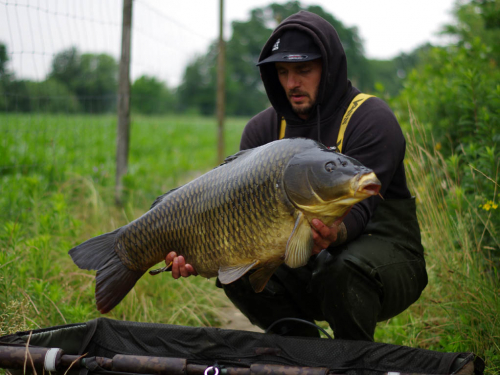
-
New products for 2022
In our work, the question arises countless times how competition is related to product development? This is when Formula 1 teams come to mind, where racing and the desire to win make engineers innovate continuously, having ...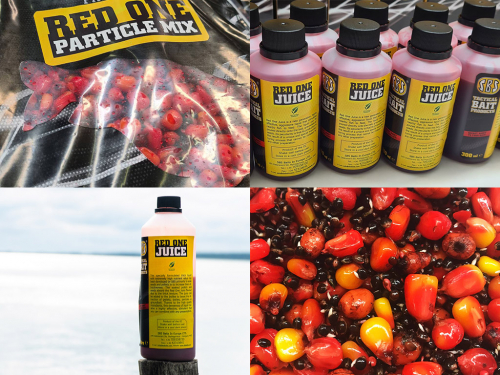
-
New Releases in SBS Clothing!
We are happy to inform you, that our new SBS Competition T-Shirts and Shorts have been launched!